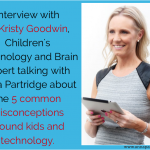
I have spoken to several school leaders recently about how to build resilience in students. I love this question. I think about it daily and I will share some of my thoughts with you to build resilience in our students.
Let’s look at the dictionary definition of resilience. In the Oxford Dictionary, there are two definitions. The first one is the capacity to withstand or to recover quickly from difficulties: toughness. And the second, the ability of a substance or object to spring back into shape; elasticity. Incorporating the idea of recovery, toughness and elasticity, I have developed a working definition or concept that can be used in schools that I will explain in more detail below.
A learned friend and former colleague, Rev Graham Long, former Pastor of the Wayside Chapel talks about the pattern of life as being ‘up and down’ and ‘down and up’ and ‘up and down’ again – picture a roller coaster and that is a normal way we live. The idea is to ensure that the downs are not too low. When we are down, life is hard, when you are up, life is easier. The capacity to move from the ‘down’ to the ‘up’ is called resilience. Being able to bounce back from something hard, whether physically, mentally, socially or emotionally, is what it means to be resilient. What strategies and tools do we have to move us from the down to the up? Be careful here, Rev Long explains that if we live in the up all the time, we have the impulse of an addict, and if we live in the down all the time, it can be called depression. Ultimately, we will move between the up and the down and the down and the up again. In addition, we want to try to find the maximum amount of strategies to thrive when up and pick us up when we are down.
If we know life’s pattern of up and down, how then do we arm our students with the right tools and strategies to move from the down to the up.
As educators, we have all seen what it looks like when students are thriving – they are happy to come to school, well organised, putting in maximum effort and their grades match it. Low wellbeing generally coincides with low levels of engagement and learning. The idea, then is to maximise wellbeing so students are engaged and learning to a high level.
Given that resilience is not innate; it is a learned skill and can be continually developed from birth, we have a significant role to play in developing this within our students.
Students must be taught, coached and mentored through whole school programs along with positive school cultures and environments, individual support and strong partnerships between school and home to ultimately build and develop their tools to bounce back from the ‘downs’.
Here are some ways it can be achieved in both a primary and secondary school setting.
Younger children (primary aged)
Primary-age children are more malleable when it comes to resilience and we can help students find ways to develop strong minds, brave hearts and healthy bodies. When these areas are in sync, students are thriving.
Strong minds – build a mind that is inquisitive, good at problem solving, wants to learn and is competent in literacy and numeracy as well as other areas that stimulate a love of learning.
- Challenge students in their learning, push them to the deep learning pit so they can master a skill
- Provide lots of opportunities for young children to play – they are developing problem solving skills and social interactions
- Establish strong routines, boundaries and expectations in the classroom to facilitate structure and habit building
- Develop a strong curriculum around literacy and numeracy particularly
- Engage students through innovative pedagogy and relevant and meaningful curriculum – the goal is to establish a love of learning which is a great tool for moving to the ‘up’
Brave hearts – bounce back from an emotional or social setback.
- Teach lessons of pastoral care each week to develop skills such as a growth mindset, emotional intelligence, teaching how to navigate strong feelings, discuss values, conflict resolution, friendship development, strategies for positive thinking
- Incorporate gratitude and ‘what went well’ into your morning circle
- Establish a sense of belonging for each student by really getting to know them and understanding why they come to school
- Develop a solid relationship with every student based on the student’s interests so students feel known, seen and heard
- Value collaboration in the classroom and when doing PE so students are learning to take turns, listen to each other, and interact in a positive way
- Utilise the school counsellor/psychologist when students need it
- Employ restorative conversations when dealing with conflict or social situations
- A calming corner might help or rearranging the classroom to support emotional growth
Healthy bodies – bounce back from a physical setback
- Teach nutrition, healthy eating, good sleeping habits and give ideas for good lunches
- Speak to families about different foods that need to be included and what you are noticing when students are not eating well
- Run PE lessons that are based on skill and developing different muscle groups
- Provide a play space where students can run, jump, kick and play
Educating parents about building resilience at home is also essential. Parents first thought is to jump in when children move to a ‘down’ in their life. Solving the problems for our children won’t help them build resilience. Always jumping in at school when there is a problem or trying to fix a child’s friendship issue with another parent won’t help in the long run. Running workshops on enduring big emotions like disappointment and anger and ways parents can build strong minds, brave hearts and healthy bodies.
Older children (secondary school)
Secondary students have experienced the ups and downs and have set tools and strategies in place already. When students are experiencing a low, as educators, we need to understand what is going on for that young person and suggest supportive strategies and ideas that will help move them to the ‘up’ again. The more complex the issue, the more complex the solution.
My go-to for a less complex issue with an individual student is the PERMA-PLUS model – I have a diagram on my desk and ask students the following questions using the wheel. When each element from this model is in sync, students generally flourish. The opposite is languishing.
- Positive emotions: What is allowing you to experience positive emotions right now?
- Engagement: What are you engaging in? Ideally, the answer is school, cocurricular, and friendships. However, that is not always the case.
- Relationships: Who are you friends with? How are they going? How are family relationships going?
- Meaning: This is a little harder for teenagers – but where are you gaining meaning from now?
- Accomplishments – what was your last accomplishment? Another way to look at this is, where have you experienced joy that is not necessarily an accomplishment?
- Sleep: How much sleep are you getting each night? Do you feel rested? Is technology interrupting your sleep? This often leads to, what is your screen time usage right now?
- Nutrition: Are you eating three meals a day? What are they? Are you getting what you need from your food?
- Live optimistically: again this is a little tricky for teenagers, but optimism and hope are two of the buffers to poor mental health so it is worth asking what they are looking forward to? What small goals do they have in place to achieve?
- Physical activity: What sport are they engaged in? How much exercise are they doing?
When students are experiencing a low, there is always a gap in the above that can be explored and worked on. Depending on the gap, students may need professional support and help from parents.
From a more holistic point of view, resilience can be built through whole school wellbeing programs and an equally supportive, safe, positive school environment and culture with strong role models. Resilience can also be used to look at how certain year groups are travelling on the pattern of up and down and strategies put in place to support them to move ‘up’. This can then be used across a whole sub-school, house or even school to ensure that we have the right measures in place regarding a pastoral care curriculum and pastoral care support and structures for students to thrive and flourish.
When curriculum, wellbeing and cocurricular truly interact in a school and when there is alignment to the mission and vision of the school from the staff, students and parents – the school is at a point of flourishing.
For further discussion on how this might work best in your school, please reach out to me on Linkedin at https://www.linkedin.com/in/anna-partridge-education/







Sorry, comments are closed for this post.